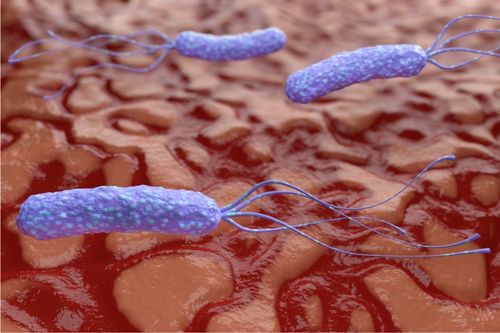Table of Contents
The study of cancer seeks to discover and improve methods of preventing, diagnosing, and treating cancer. Doctors and scientists can utilize these studies in a variety of ways to address the patients’ queries. There is no such thing as a flawless study or research. Hence, cancer research is a continuous process.
Each has its advantages and disadvantages.
It is essential to understand how studies are designed when investigating information concerning cancer. This can assist you in determining what the results mean. Some research is very preliminary or ‘early,’ which means that the results will not alter patient care for a long time. Other research findings may have an immediate influence on how doctors care for and treat cancer patients.
Definition of study of cancer

The study of cancer is research done to determine cancer origins and develop techniques for prevention, diagnosis, treatment, and cure. The scientific name for the study of cancer is oncology.
Universities, research institutes, and corporate settings conduct cancer research, and the government mainly provides the funds.
Why the study of cancer is important
Cancer research is necessary because the better we understand these diseases, the more progress we will make toward reducing cancer’s enormous human and economic costs.
We now understand the biochemical mechanisms involved in cancer initiation, growth, and spread in the body thanks to extensive cancer research. These observations have resulted in more effective, focused treatments and prevention efforts.
Breakthrough observations in prevention, early detection, screening, diagnosis, and treatment are often the result of decades or even generations of research and discovery by scientists from several fields. Translating past findings into today’s groundbreaking observations and tomorrow’s treatment, cancer research requires partnerships and collaborations, including researchers, physicians, patients, and others.
Cancer research cycle
Research advancement is frequently continuous and cyclical rather than linear.
Advances are made by constantly building on previous findings and observations.
The research cycle moves from medically relevant findings to the patient’s bedside and back to the lab. The cooperation of basic and population scientists, physician-scientists, and clinical researchers, as well as patients, caregivers, and health care providers, are essential for progress in cancer research. Insights from one discipline impact others, and discoveries in one malignancy can lead to new approaches to treating others.
Types of cancer research

Cancer research utilizes epidemiology and molecular biology and conducts clinical trials to evaluate and compare the efficacy of various cancer treatments. These applications include surgery, radiation therapy, chemotherapy, hormone therapy, immunotherapy, and combined treatment methods such as chemo-radiotherapy.
Beginning in the mid-1990s, the emphasis on clinical cancer research changed toward biotechnology-derived medicines such as cancer immunotherapy and gene therapy.
There are many broad categories of cancer research-
Basic research
The study of animals, cells, molecules, or genes to gain new knowledge about cellular and molecular changes that occur naturally or during the development of a disease is known as primary research.
Primary research is also known as laboratory research or preclinical research.
Translational research
Translational research aims to hasten the translation of laboratory discoveries into clinical practice. This is commonly referred to as transferring advances from the bench to the bedside.
Clinical research
Clinical research entails the use of therapies and procedures on patients.
The process involves performing clinical trials, examining a specific patient or group of patients, including their behaviors, or using human body fluids, such as blood or tissue samples, to learn about the disease and its symptoms, a healthy body’s functioning, or how it responds to therapy.
Population study
The research (also known as epidemiological research) involves the study of cancer, its causes, patterns, and risk assessment. Population scientists, often known as epidemiologists, investigate specific populations’ trends, causes, and consequences of health and disease. Population research is very collaborative and can range from fundamental to clinical research.
Applications of cancer research
Cancer research aims to find cures for different cancers and help cancer patients live normal lives. Depending on the cancer patient’s situation, this may or may not be doable. If a cure is not possible, the treatments can be used to shrink your cancer or slow its growth, allowing you to live as symptom-free as possible.
Cancer treatments include
Primary treatment
A primary treatment aims to eradicate cancer from the body or kill all cancer cells.
Although any cancer treatment can be used as a primary treatment, surgery is the most commonly used for the most prevalent kinds of cancer. If your cancer is susceptible to radiation therapy or chemotherapy, you may be given one of those treatments as your primary treatment.
Adjuvant treatment
- The purpose of adjuvant therapy is to eliminate cancer cells that might have remained after primary treatment to lessen the likelihood of recurrence.
- Adjuvant therapy can be used with any cancer treatment. Chemotherapy, radiation therapy, and hormone therapy are standard adjuvant therapies.
- Similar to adjuvant therapy, neoadjuvant therapy is administered before the primary treatment to make the primary treatment easier or more successful.
Palliative treatment
Palliative care may help decrease treatment-related side effects as well as cancer-related signs and symptoms. Surgery, radiation, chemotherapy, and hormone therapy can all be employed to alleviate symptoms. Other drugs can help with symptoms, including discomfort and shortness of breath.
Palliative care can be used alongside other treatments aimed at curing your cancer.
Key takeaways
- Cancer research is important for developing cancer prevention practices, detection, and treatment, and it also helps the survivors live longer happier lives.
- Cancer research uses epidemiology, molecular biology, and clinical trials to evaluate and compare the efficiency of various cancer treatments and therapies.
- The goal of cancer research is to find cures for different types of cancers. If a complete cancer cure is not possible, then the treatments can be used to shrink cancer or slow its growth, allowing the patient to live symptom-free.
Did you find this blog informative? If so, please share your thoughts in the comments section below. Click here to contact us for more information on the study of cancer. We would be happy to assist you with your queries.
Liked this blog? Read next: Study of kidney- a guide to nephrology
FAQs
Q1. Who studies cancer cells?
Ans-An oncologist is a doctor who specializes in cancer diagnosis and treatment and also studies cells.
Q2. What causes cancer?
Ans-Cancer is caused by alterations in genes, the basic physical inheritance unit. Cancer is said to be a genetic disease, which means that abnormalities cause it in the genes that control how our cells behave, particularly how they grow and divide.
Q3. Can Stage 4 cancer be cured?
Ans-Stage 4 cancer is usually incurable. Cancer has spread throughout the body by the time it is detected, so the possibility of full eradication is less. The goal of treatment at this stage is to increase your chances of survival while also improving your quality of life.






